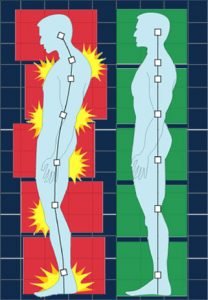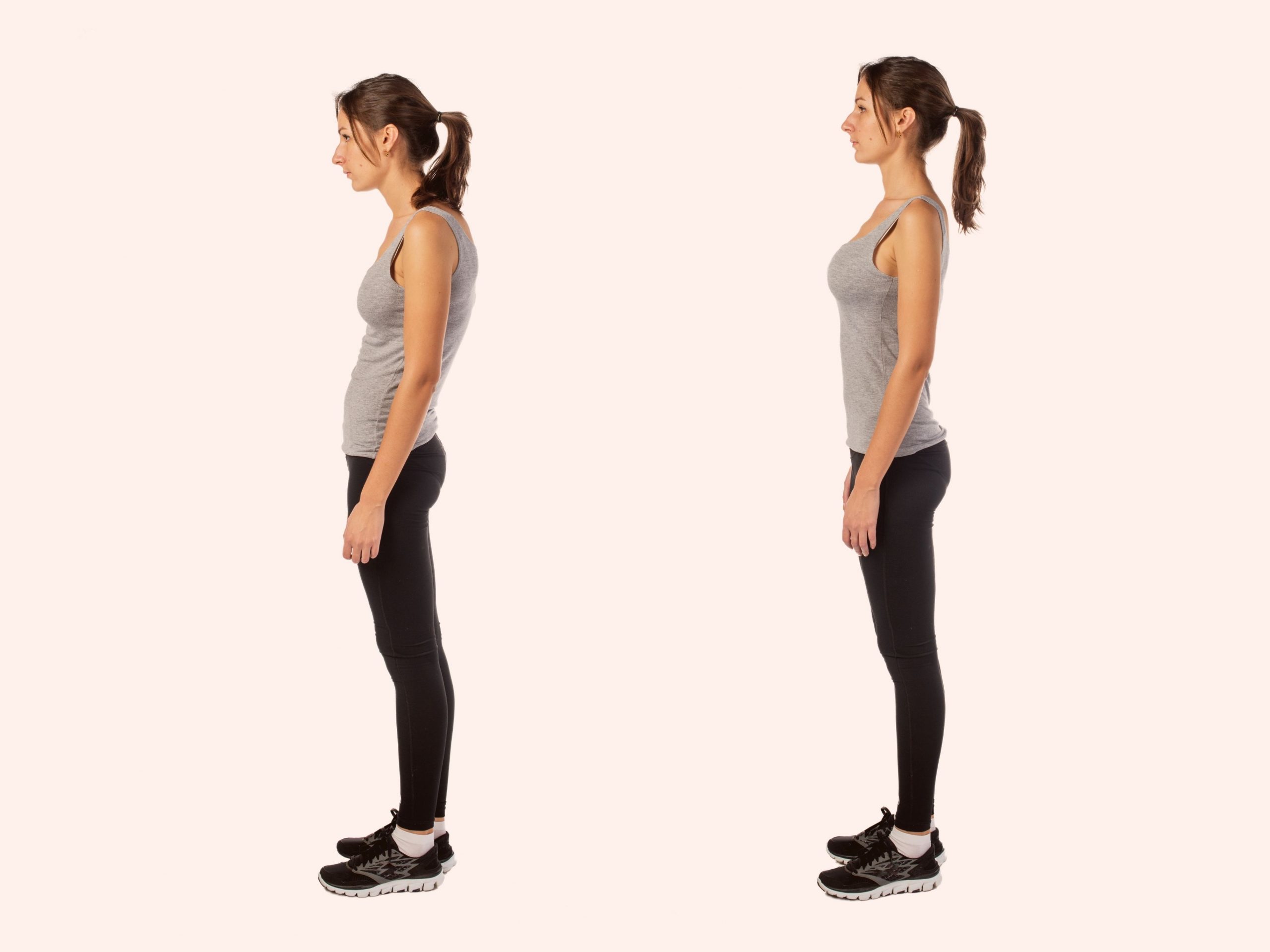Bad body habits
Poor posture doesn’t happen quickly. It is the result of bad habits that become reinforced over time. Of course, nobody deliberately chooses these habits, they are often the result of sitting for long periods of time, in poorly designed office or home furniture. It’s unnatural and unhealthy.
So how can we remedy it?

Poor posture
Poor posture – And how to recognise it
When we go about our everyday lives it is easy to notice when someone else has poor posture. However, it is not always as easy to accept or admit that we ourselves have less than perfect posture.
Obviously, the extent of the problem can vary enormously. In its most extreme form, we can picture the little old lady completely hunched over from years of neglect. But long before that, there are signs that you can pick up that signal it might be something you need to address.
Take a look at a recent photo of yourself, or take an objective look in the mirror. Are your shoulders rounded? Is your head leaning back or neck protruding forward? Have you started to develop a pot-belly?
If so, your skeleton is out of alignment. Other physical symptoms might alert you to the issue too. Body aches and pains (especially backache), muscle fatigue and headaches are all possible symptoms.
Longer term health issues related to poor posture
If your posture is sub-standard, it affects the alignment of the spine. Longer term this can lead to serious health issues.
Worryingly poor posture may cause problems with blood vessel constriction. Blood vessel constriction can cut off blood supply to the cells of the muscles, raise your chances of clot formation, cause varicose veins and even affect nutrient and oxygen supply.
What is more, sitting in a compromised position long term can also put undue pressure on your intestines. This, in turn, can cause problems with acid reflux, possibly constipation or even hernias.
But as mentioned before, posture problems can vary from mild to severe. Obviously, the earlier postural tissues are tackled the easier they are to combat.
How to improve your posture
The first step is to have a better understanding of exactly what is wrong with your posture. For this, you need to undergo a postural assessment. A qualified therapist will point out any shortcomings in your posture.
The assessment will be quite detailed and will look at various aspects including your feet position, whether or not your knees turn in or out, whether or not your shoulders are level and much more. All these things indicate whether you have muscle tightness or imbalances that are contributing to the problem.
Once the therapist has a proper overview of your postural issues they can point you in the right direction. Every one is different and will need a tailored programme to help them redress their own challenges. Massage, physiotherapy, and osteopathy can all assist in improving posture.
And if you are looking for a really proactive solution for looking after your posture long term, both Pilates and yoga can be of great benefit. Whatever you do, don’t wait too long to sort it out.
We hope this information is useful for you. If you have any questions about our treatments, please contact us. You can find us in Mill Hill Broadway and Islington. If you like this blog, please share! We are always happy to help.



